Bugs Bunny Rides Again
7.8 /10 1 Votes
Film series Merrie Melodies Language English | 7.8/10 IMDb Music director Carl Stalling Duration | |||||||||||||||||||||||||||||||||
 | ||||||||||||||||||||||||||||||||||
Release date June 12, 1948 (1948-06-12) Similar movies Merrie Melodies movies, Related Friz Freleng movies | ||||||||||||||||||||||||||||||||||
Bugs bunny rides again yosemite sam sequence original release vs re release comparison
Bugs Bunny Rides Again is a 1948 Warner Bros. Merrie Melodies short, released in 1948, directed by Friz Freleng, and written by Tedd Pierce and Michael Maltese. The short is both part of the Western and a parody of the genre's conventions.
Contents
- Bugs bunny rides again yosemite sam sequence original release vs re release comparison
- Plot
- Cast
- Critical reception
- Music
- Edited versions
- Availability
- References

Voice characterizations are performed by Mel Blanc. The cartoon features Bugs Bunny and Yosemite Sam. It is the second cartoon to pair them, after their first encounter in 1945's Hare Trigger. The title is a typical Western reference, as in "The Lone Ranger rides again", and also suggests a reference to the 1940 Jack Benny comedy, Buck Benny Rides Again. In the scene where Yosemite Sam states "...the roughest, toughest he-man hombre that's ever crossed the Rio Grande, and I don't mean Mahatma Gandhi" is changed to where he says "And I ain't no namby pamby" instead of "Mahatma Gandhi" in the reissue prints, likely due to Gandhi's assassination in 1948, the year the cartoon was first released.
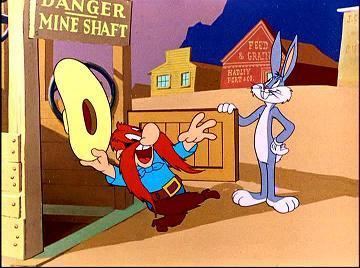
Plot
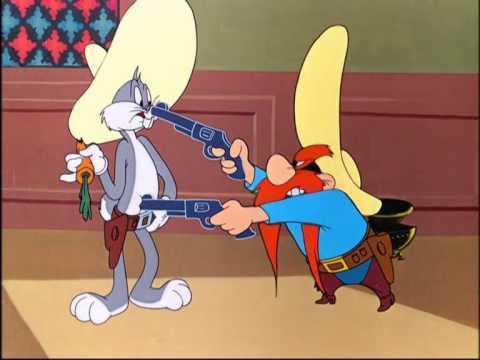
A hail of bullets flies down one street until a traffic light turns red and the bullets hover in mid-air while a second hail of bullets shoot by on the perpendicular street. Afterwards, Yosemite Sam walks into the saloon. All of the patrons are afraid of Sam, yelling his name in terror while the score plays Der Erlkönig (as is often the case for villains in Looney Tunes). No one dares to challenge Sam except Bugs Bunny. Sam says that the town isn't big for both of them; after Bugs tries to accommodate him by then instantly building an entire city skyline, bur Sam is not appeased. Bugs and Sam draws out increasingly bigger guns; Bugs shoots Sam's nose with a pea shooter, and, after performing a soft shoe routine, tricks him into falling into a mine shaft. When Sam returns to the surface, Bugs dares him to cross lines drawn with his foot Sam does so until he falls off the cliff.
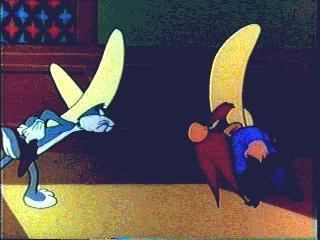
Sam chases Bugs on horseback, until Bugs convinces Sam to play cards with him instead, to determine who leaves town. After Bugs wins the game, he tries to get Sam to take the train out of town. The two of them arrive at the train station and discover that the passenger car is the Miami Special, full of swimsuit-clad women. Accompanied with a rendition of Oh You Beautiful Doll fit for a striptease number, the plot twist completely changes the tone. Bugs fights with Sam to board the train, and prevails as usual, shouting, "So long, Sammy! See ya in Miami!"
Cast
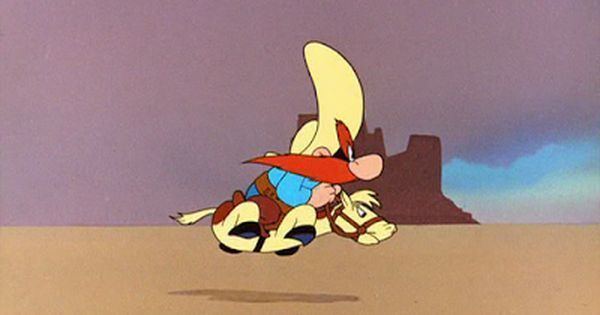
• Mel Blanc as Bugs Bunny, Yosemite Sam, Cowboys and Skunk
Critical reception
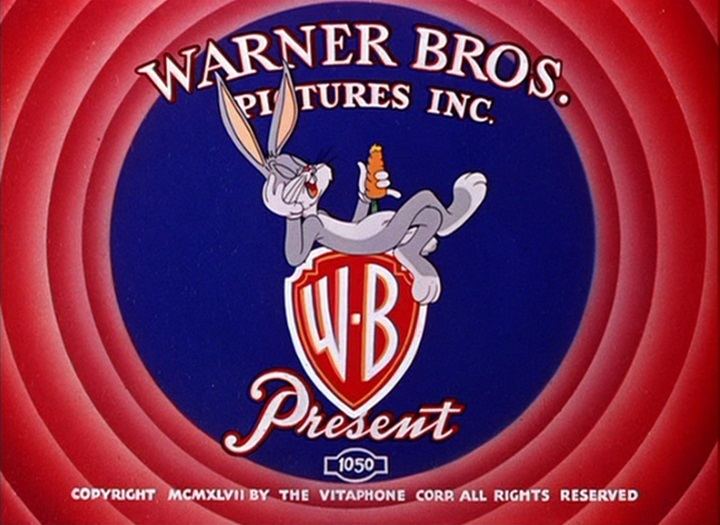
Animation historian Greg Ford praised Freleng's musical accompaniment to during the horse chase, and author Piotr Borowiec describes it as "Probably the funniest cartoon starring Bugs Bunny and Yosemite Sam".
Music
Because the film is organized as "one gag after the next", rather than clearly defined narrative segments of exposition, climax, and conclusion, Carl Stalling created a series of short musical cues accompanying and fitting each scene or gag. A total of 18 such cues appear in this short.
The title music is a short sample of the William Tell Overture (1829) by Gioachino Rossini. The establishing shot for the unnamed western town of the film is accompanied with a sample of Cheyenne (1906) by Egbert Van Alstyne and Harry Williams. The establishing shot for the saloon and its customers is accompanied with a sample of Navajo (1903), also by Van Alstyne and Williams. The entry of Yosemite Sam is accompanied by a sample of Der Erlkönig (1821) by Franz Schubert. When Bugs Bunny emerges as the only one willing to stand against Sam, the music is a sample of Yosemite Sam, a song created by Stalling himself.
When Sam and Bugs start their duel, the music is a sample of Inflamatus, a section of the Stabat Mater (1841) by Rossini. When Sam states that the town is not big enough for the two of them, the music is a sample of Sonata Pathétique (1799) by Ludwig van Beethoven. The dancing scene is set to the tune of Bugs Bunny Rides Again, which was also heard with a similar dance in Stage Door Cartoon, and the fall of Sam down the mine shaft to the tune of Wise Guy. Both were compositions by Stalling himself. When Sam rages following his fall, the music is a sample of the Götterdämmerung (1876) by Richard Wagner.
When the two rival exit the town, the music is a sample of Fighting Words by Stalling, while the horse chase is set to another sample of the William Tell Overture. When the two rivals agree to play cards, the music is The Loser by Stalling. Part of the card playing is set to a sample of My Little Buckaroo by M.K. Jerome and Jack Scholl. The victory of Bugs and the rush towards the train station is set to another sample of Cheyenne. The scene with the bathing beauties is set to the tune of Oh, You Beautiful Doll (1911) by Nat Ayer and Seymour Brown. When Bugs subdues sam, the music is Miami Special by Stalling. Finally, the train leaves to the tune of Aloha ʻOe (1878) by Liliuokalani.
In part, Stalling relied on the musical codes of the Western genre. Cheyenne, My Little Buckaroo, Navajo, and the William Tell Overture were already associated with the Old West, cowboys, and cattle, and were familiar to audiences. Der Erlkönig, the Inflamatus, and the Sonata Pathétique fit the function of generic dramatic or agitated music used in genre films. In contrast, the titular tune of Bugs Bunny Rides Again is styled after the music of vaudeville shows.*Lewis, Lisa (2013), "Styles and Aesthetics of tap dance", Beginning Tap Dance with Web Resource, Human Kinetics (publisher), p. 106, ISBN 978-1-4504-1198-1
Edited versions
Availability
References
Bugs Bunny Rides Again WikipediaBugs Bunny Rides Again IMDb Bugs Bunny Rides Again themoviedb.org
